Thomas Cole's Journey: Following in the Artist's Footsteps
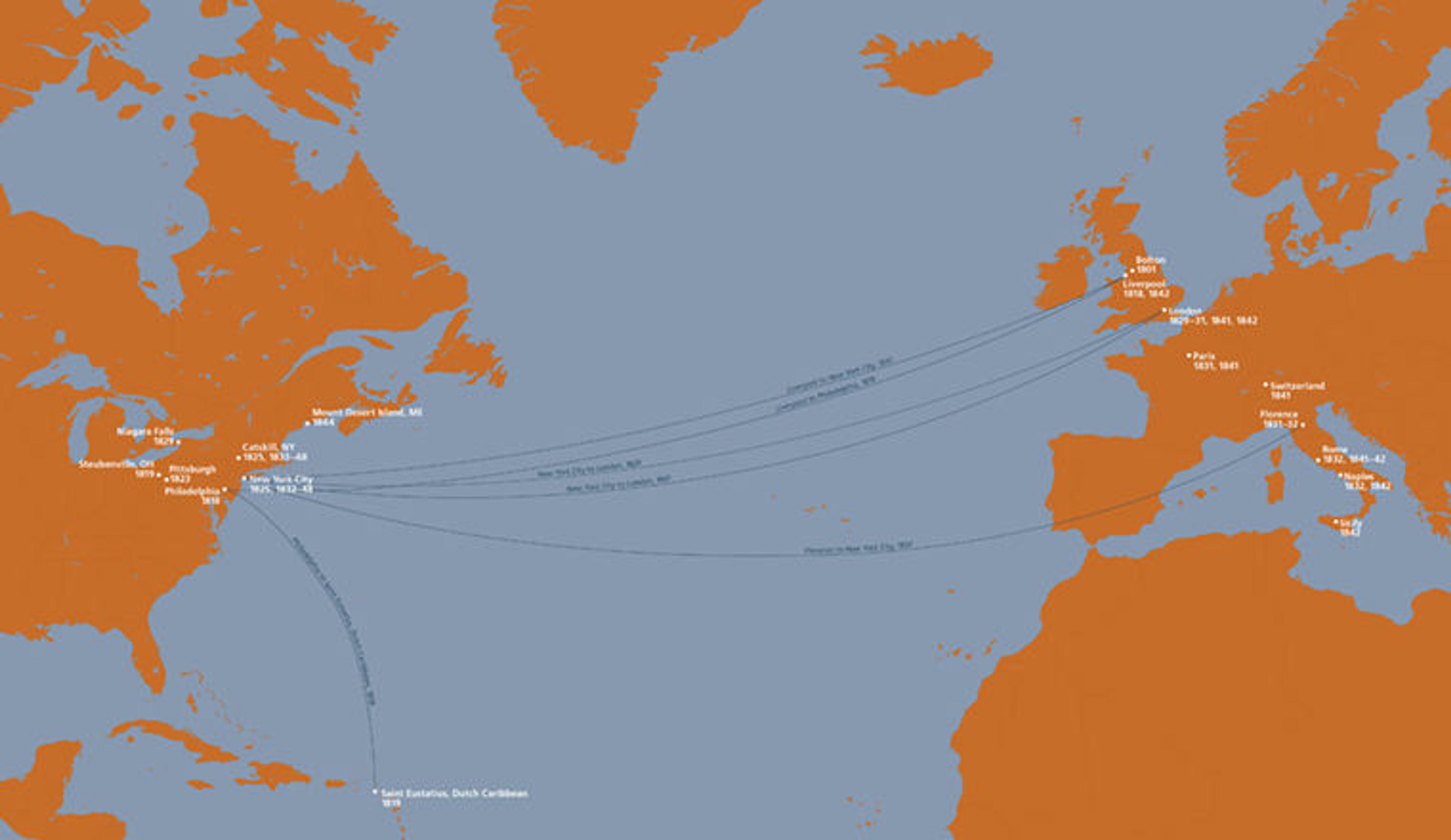
Map highlighting Thomas Cole's Atlantic crossings, 1801–1848. Design by Ria Roberts
«The exhibition Thomas Cole's Journey: Atlantic Crossings and its catalogue re-examine Cole and his legacy, and in the process rethink the emergence of landscape painting in the United States within a global context. Learning to see anew this seemingly familiar figure proved to be an extraordinary three-year journey of discovery, taking the curatorial team with Cole through territory as disparate as Lancashire and London; Florence, Rome, and Naples; New York City; and, finally, to his studio in Catskill, New York, in the Hudson River Valley.»

Thomas Cole (American, 1801–1848). View from Mount Holyoke, Northampton, Massachusetts, after a Thunderstorm—The Oxbow, 1836. Oil on canvas, 51 1/2 x 76 in. (130.8 x 193 cm). The Metropolitan Museum of Art, New York, Gift of Mrs. Russell Sage, 1908 (08.228)
With its opening this year, we celebrate the 200th anniversary of Cole's first Atlantic crossing, when he immigrated with his family to the United States in 1818, as well as examine in depth Cole's return journey to England in 1829 through '31 and his travels in Italy in 1831 and '32. At the heart of the show, we re-examine iconic works created by the artist in the years immediately after his return to New York in 1832—notably The Oxbow and The Course of Empire series—both of which are presented as the culminating creative responses to Cole's complex experiences of British art and society, and of Italian history and landscape.
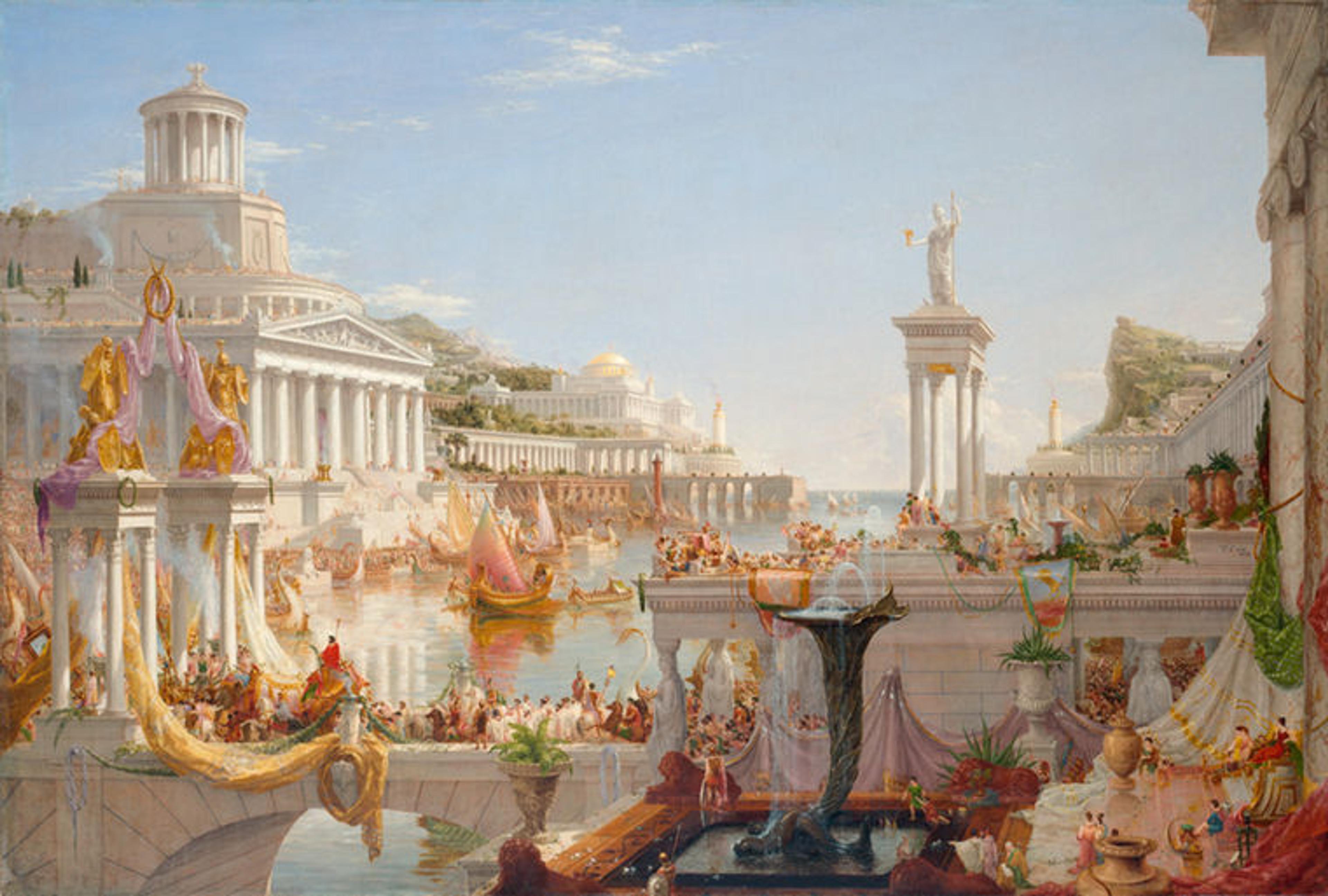
Thomas Cole (American, 1801–1848). The Course of the Empire: The Consummation of Empire, 1835–36. Oil on canvas, 51 1/4 x 76 in. (130.2 x 193 cm). New-York Historical Society, Gift of The New-York Gallery of the Fine Arts (1858.3). Digital image created by Oppenheimer Editions
When we began the research for this exhibition, the details pertaining to Cole's youth in northern England, as well as his first return journey to Europe, were scattered throughout the literature on the artist. Therefore, it became our primary objective to piece back together the details of Cole's journey: We set out to determine whom he met along the way, including contemporary artists and patrons; the museums and monuments he visited; and the artworks he saw and studied.
We also worked to identify and locate as many examples as possible of the works that Cole produced while abroad. In the process, we discovered that Cole's journey was incredibly influential and productive, having a lasting impact on his artistic development, processes, and legacy.
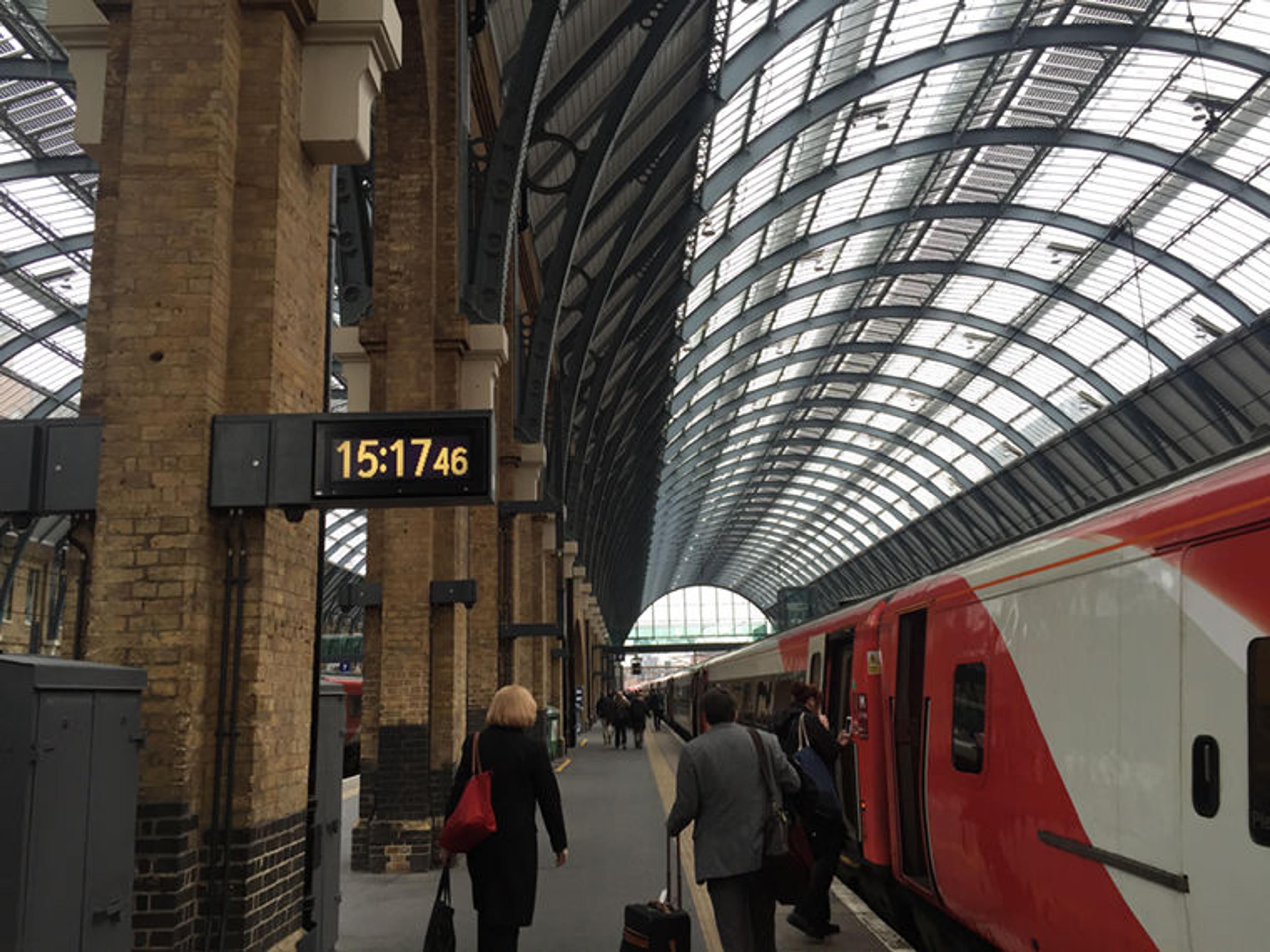
Betsy Kornhauser and Tim Barringer boarding a train from London to Lancashire, 2016. Photo by Shannon Vittoria
Our desire to follow in Cole's footsteps was not entirely new: Lovers of art and nature have been following Cole throughout the Hudson River Valley for years, searching for the vistas, overlooks, and mountains that he memorialized in his paintings of the region. Our focus, in contrast, was on Cole's European roots and travels, making our first stop Bolton—an industrial town in the northwestern county of Lancashire, England, where Cole was born in 1801.
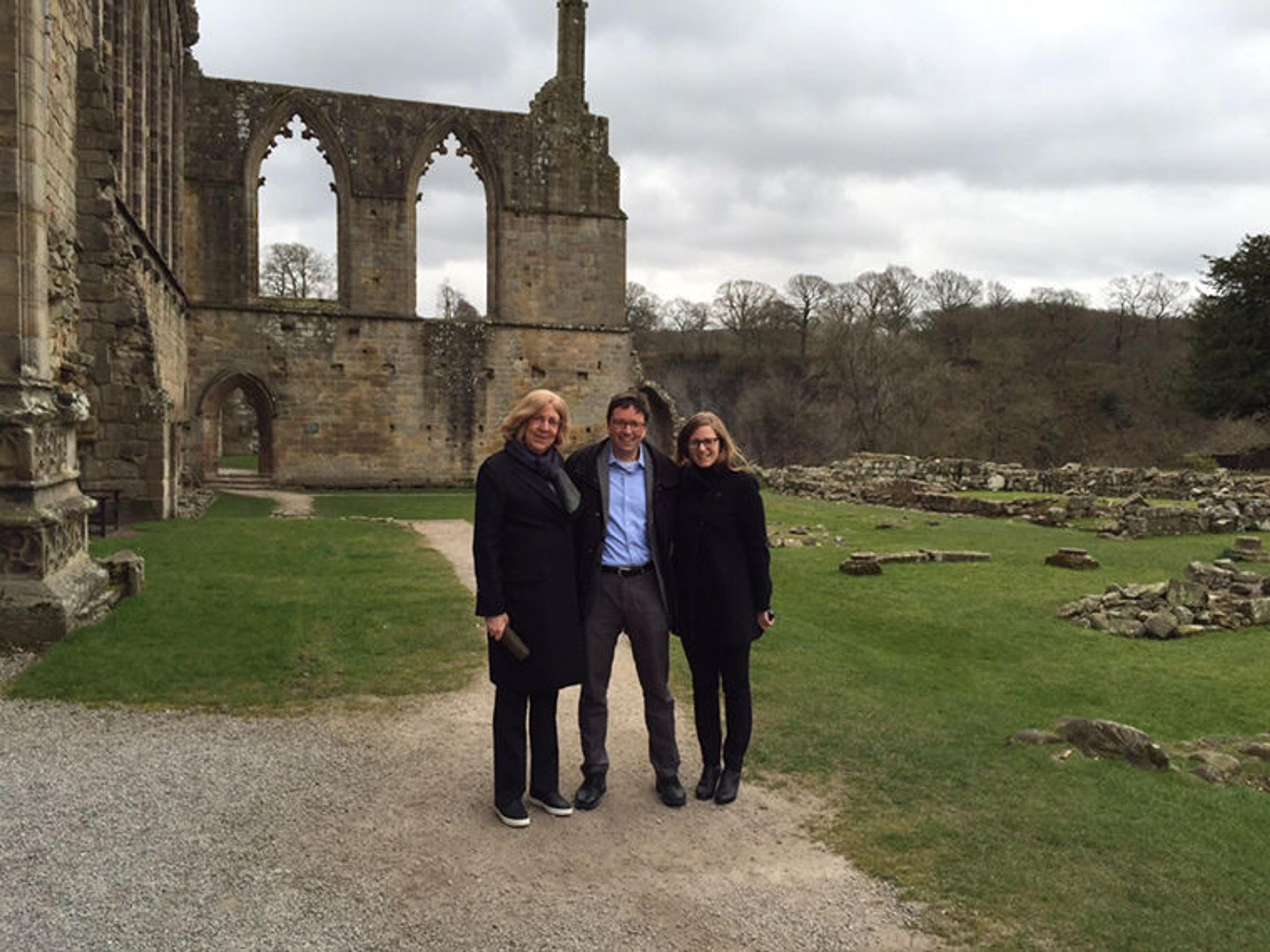
Betsy Kornhauser, Tim Barringer, and Shannon Vittoria at Bolton Abbey, Yorkshire, England, 2016

Selim Rothwell (British, 1815–81). Bolton from Blinkhorn's Chimney with Vignettes of Local Buildings, 1848. Watercolor on paper, 30 x 40 in. (76.3 x 101.7 cm). Bolton Museum and Art Gallery, Lancashire (1935.6)
Traveling with exhibition co-curator Tim Barringer, we approached Bolton from the north, driving first through picturesque moorland and visiting nearby historic sites, including Bolton Abbey, before descending into the valley where the industrial city is located. Surrounded by smokestacks and factories, we experienced the sharp contrast, which remains today, between nature (the moors) and industry (the city) that characterized Cole's youth in England and later became a central concern of his landscape paintings.
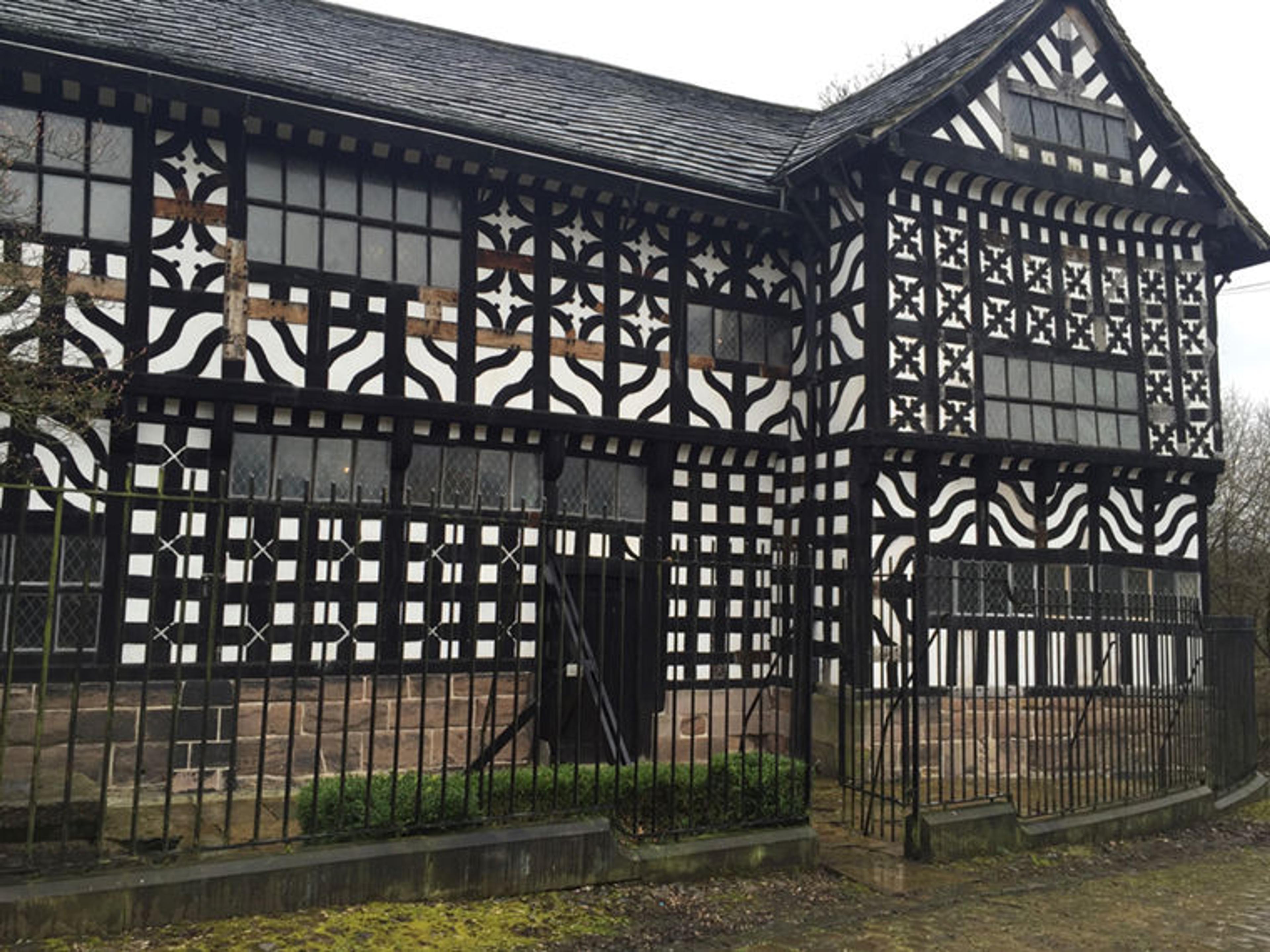
Hall i' th' Wood, Bolton, England, 2016. Photo by Shannon Vittoria
While in Bolton, we visited Hall i' th' Wood, a historic home that was once occupied by English inventor Samuel Crompton. Hall i' th' Wood was also the site where, in 1779, Crompton invented the spinning mule, which revolutionized the textile industry, causing the flourishing cottage industry of skilled handloom weavers to be replaced with mechanized factory jobs.

Peel Pattern Book, Volume 2: Book of Costings, 1813–22. British, Peel, Yates & Co., Church Bank Printworks. Paper, fabric, 13 3/8 x 19 11/16 in. (34 x 50 cm). Bolton Library & Museum Services, Purchased with the assistance of the V&A Purchase Grant Fund
As a teenager, Cole was forced to take employment in a textile factory, working as an engraver of the wood blocks used to produce calicoes—colorful and inexpensive printed cotton fabrics. Although the name of the printworks where Cole was employed does not survive, in the archives of the Bolton Library and Museum we found a remarkable calico pattern book from a nearby Lancashire printing works that dates to the period of Cole's employment. This object, on view in the exhibition, provides great insight into the types of designs that Cole may have had a hand in producing, and reveals his earliest artistic training.
Although Cole never visited London in his youth, it was his first destination when traveling back to Europe in 1829. Shortly after arriving in the imperial metropolis, Cole visited the annual exhibition of the Royal Academy, as well as The National Gallery, London—our collaborating partner on this exhibition—founded just five years prior, in 1824.
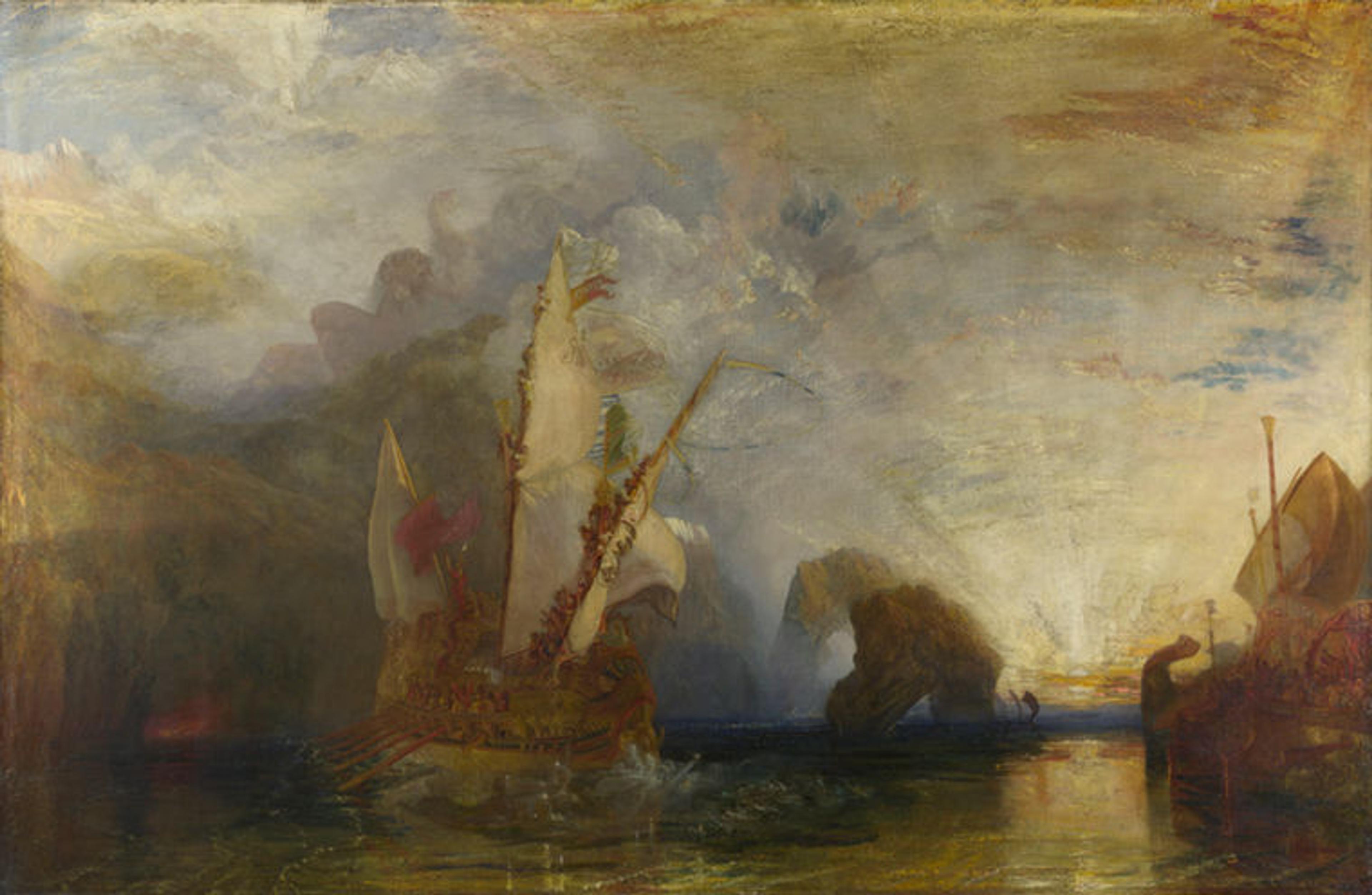
Joseph Mallord William Turner (British, 1775–1851). Ulysses Deriding Polyphemus—Homer's Odyssey, 1829. Oil on canvas, 52 3/16 x 79 15/16 in. (132.5 x 203 cm). The National Gallery, London. Turner Bequest, 1856 (NG508). The National Gallery, London/Art Resource, NY.
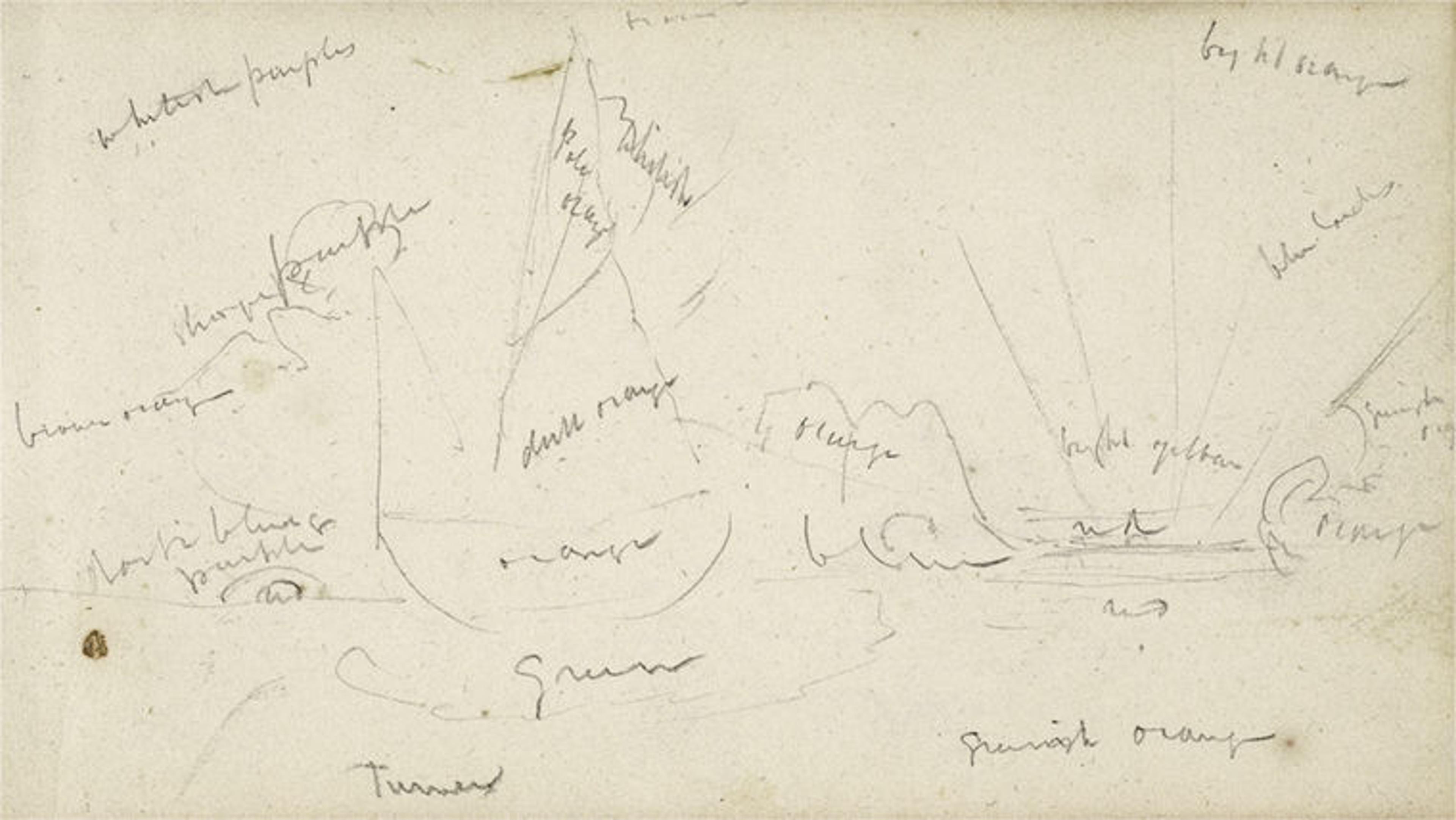
Thomas Cole (American, 1801–1848). Drawing after Turner's "Ulysses Deriding Polyphemus—Homer's Odyssey" (Color Notes) (detail), 1829. Graphite pencil on paper, sheet: 3 1/2 x 6 1/4 in. (8.9 x 15.9 cm). Detroit Institute of Arts, Founder’s Society Purchase, William H. Murphy Fund (39.682.160). Detroit Institute of Arts/Bridgeman Images
When "Team Cole" (as we nicknamed ourselves) arrived in London, our mission was to identify the works that Cole saw and admired. Armed with copies of the artist's journals and correspondence, we were able to create an inventory of the paintings and sculptures that he studied, sketched, and wrote about while abroad. This required extended visits to the galleries, storerooms, and archives of the National Gallery, London, Tate Britain, the Royal Academy, the Victoria and Albert Museum, the British Museum, and the Science Museum. In the end, this research allowed us to select the most significant of these works for display in the exhibition, including some of the greatest masterpieces painted by Claude Lorrain, J. M. W. Turner, and John Constable, among others.
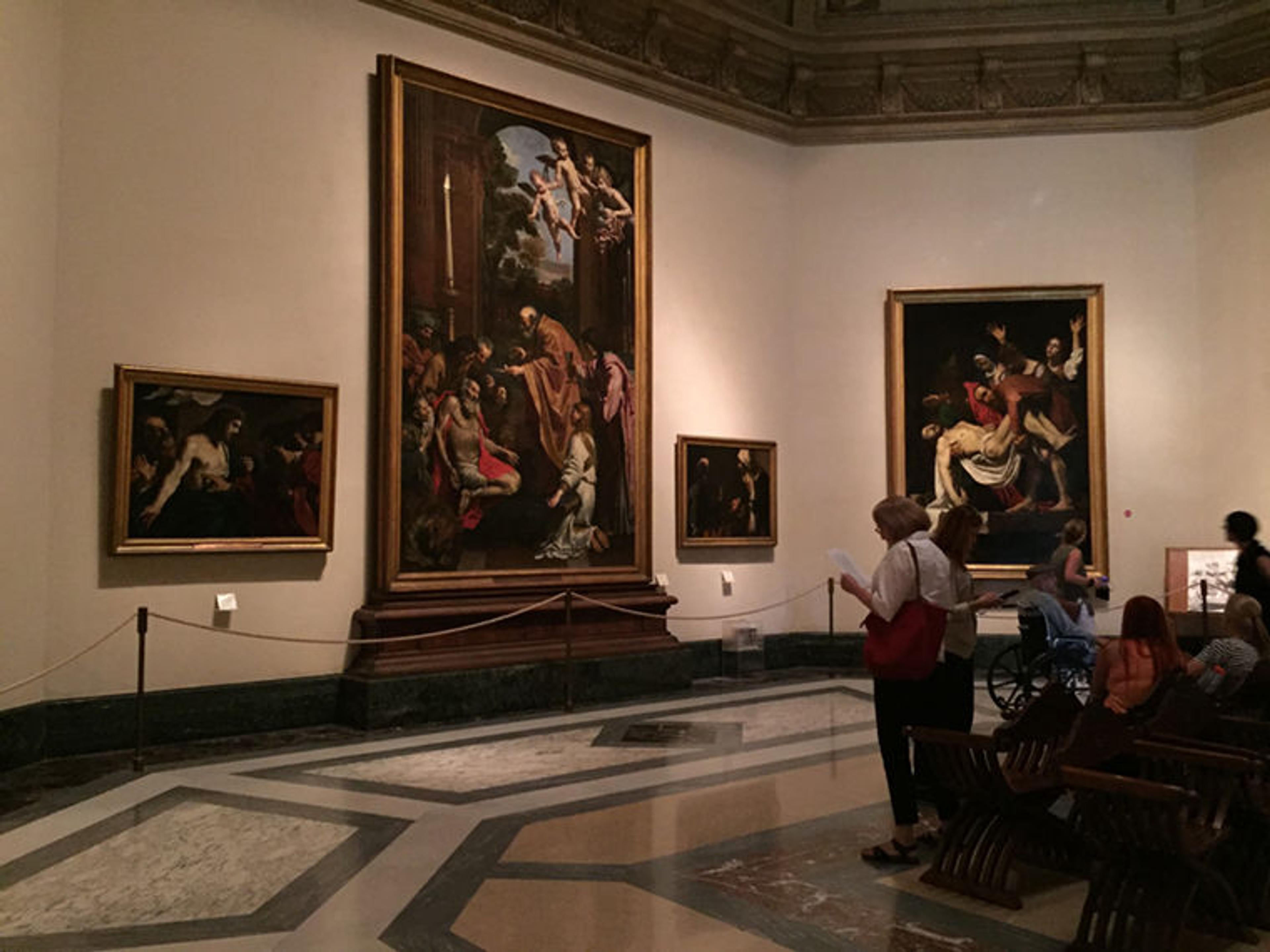
Betsy Kornhauser at the Vatican Pinacoteca, Rome, Italy, 2016. Photo by Shannon Vittoria
We then traveled to Italy to follow Cole on his adventures amidst the country's ancient ruins, thanks to the support of the Cynthia Hazen Polsky/Metropolitan Museum of Art Affiliated Fellowship at the American Academy in Rome. We began at the Vatican, where Cole studied works by Raphael, Domenichino, and Caravaggio—artists he admired for their exquisite use of color and chiaroscuro—before making our way to the Roman Forum. There, we identified many of the ancient architectural fragments that Cole sketched, comparing these ruins to his drawings and oil studies.
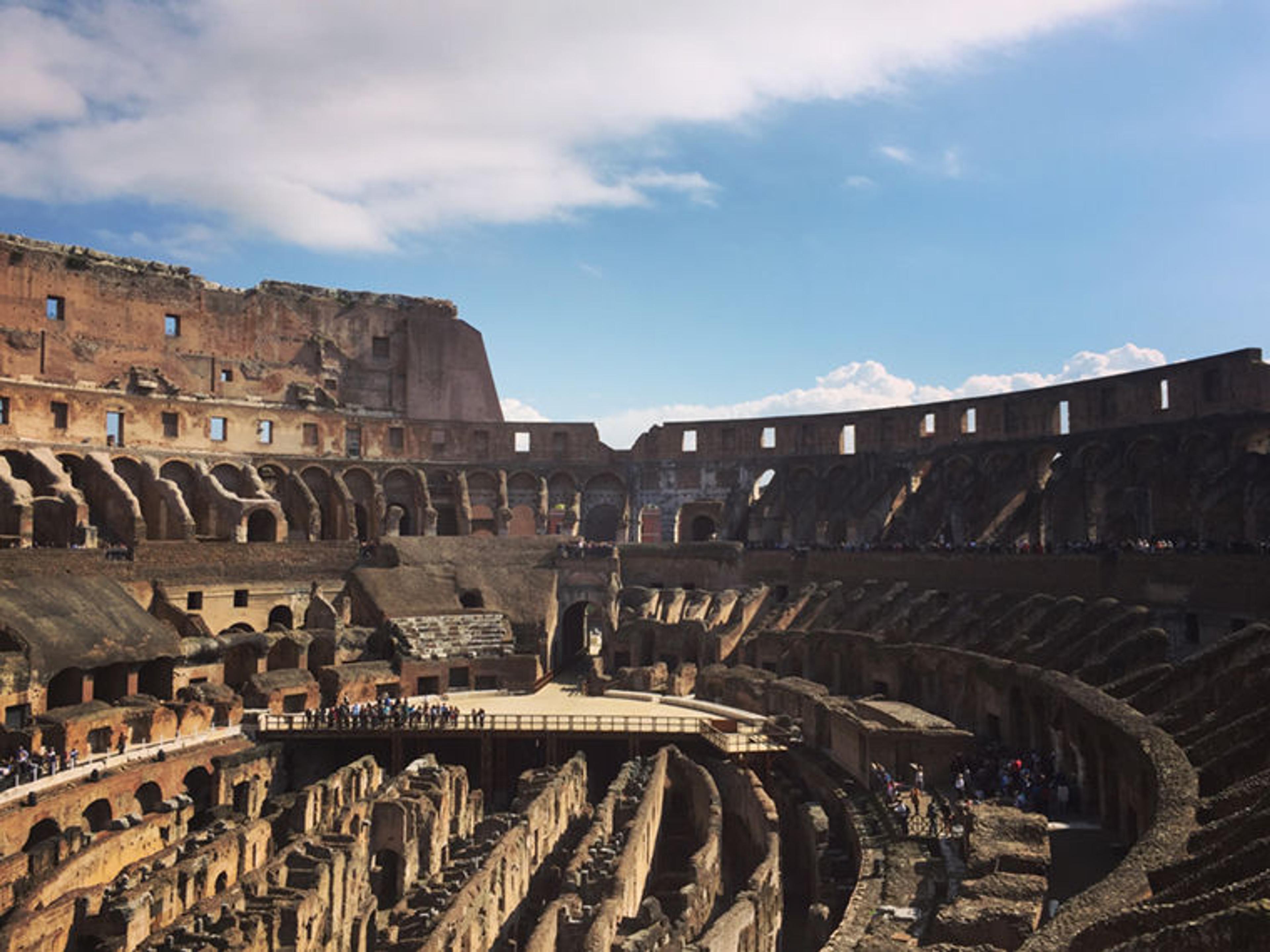
Interior of the Colosseum, Rome, Italy, 2016. Photo by Shannon Vittoria

Thomas Cole (American, 1801–1848). Interior of the Colosseum, Rome, ca. 1832. Oil on canvas, 10 x 18 in. (25.4 x 45.7 cm). Albany Institute of History & Art, Purchase, Evelyn Newman Fund (1964.71). Courtesy of Albany Institute of History & Art
We then spent considerable time in the Colosseum: "the object," Cole wrote, "that most affected me." He executed studies of both the interior and exterior of the Colosseum, and wrote extensively about the monument, which greatly influenced his understanding of history, empire, and civilizations in decline.
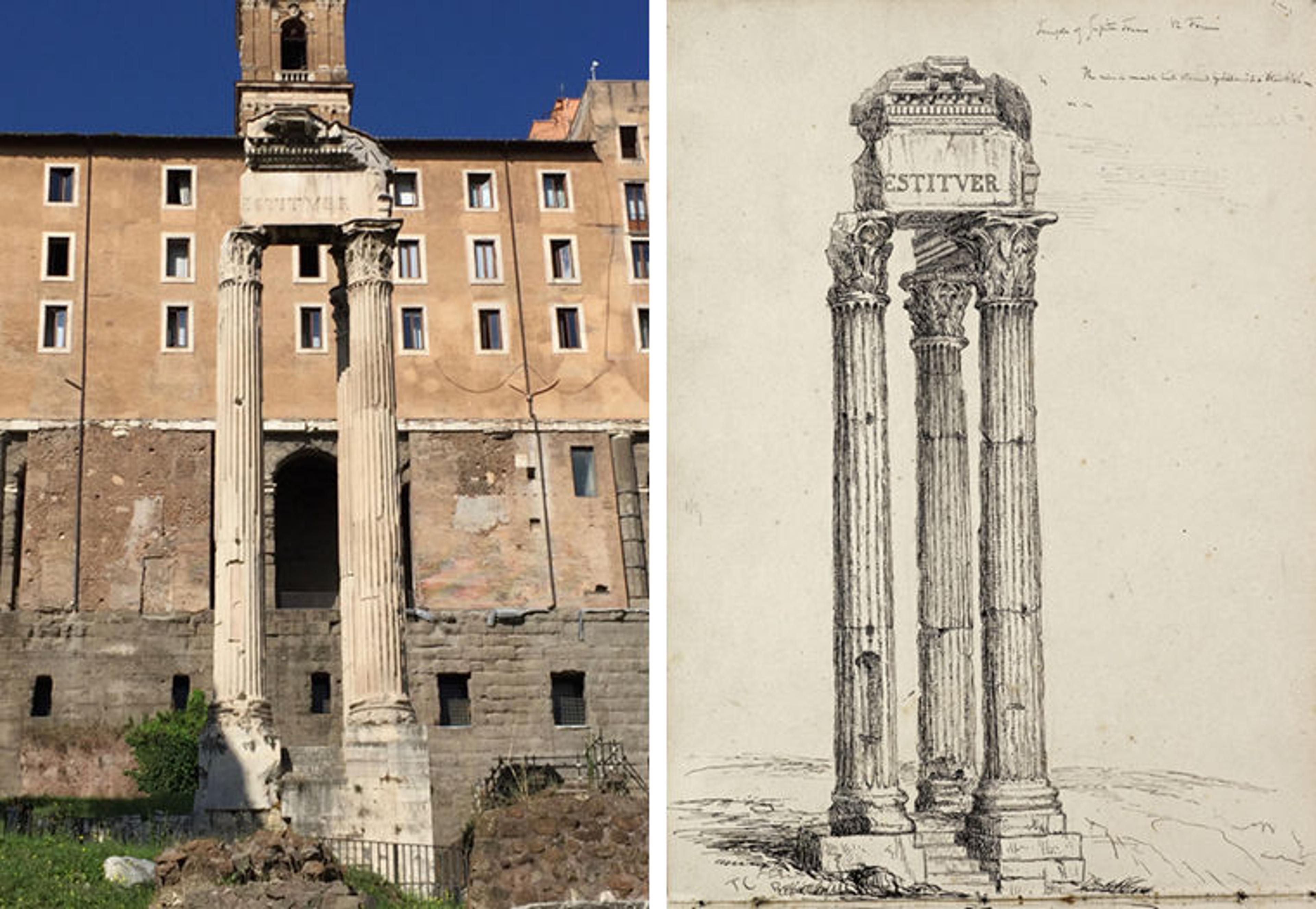
Left: Temple of Vespasion and Titus, Roman Forum, Rome, Italy, 2016. Photo by Shannon Vittoria. Right: Thomas Cole (American, 1801–1848). Temple of Vespasian, Called the Temple of Jupiter Tonans, Roman Forum, 1832. Pen and black ink over graphite pencil on off-white wove paper, sheet: 11 1/4 x 8 1/4 in. (28.6 x 21 cm). Detroit Institute of Arts, Founders Society Purchase, William H. Murphy Fund (39.562.78). Detroit Institute of Arts/Bridgeman Images
We also followed Cole out into the countryside, locating a section of the Claudian aqueduct that he sketched onsite in graphite and oil, and later painted on a grand scale from his studio in Florence. Comparing Cole's works to the ruins as they stand today, we identified the ways in which he altered his subject to create a more cohesive composition, and we were impressed by his ability to convey accurately the quality of light on the landscape.
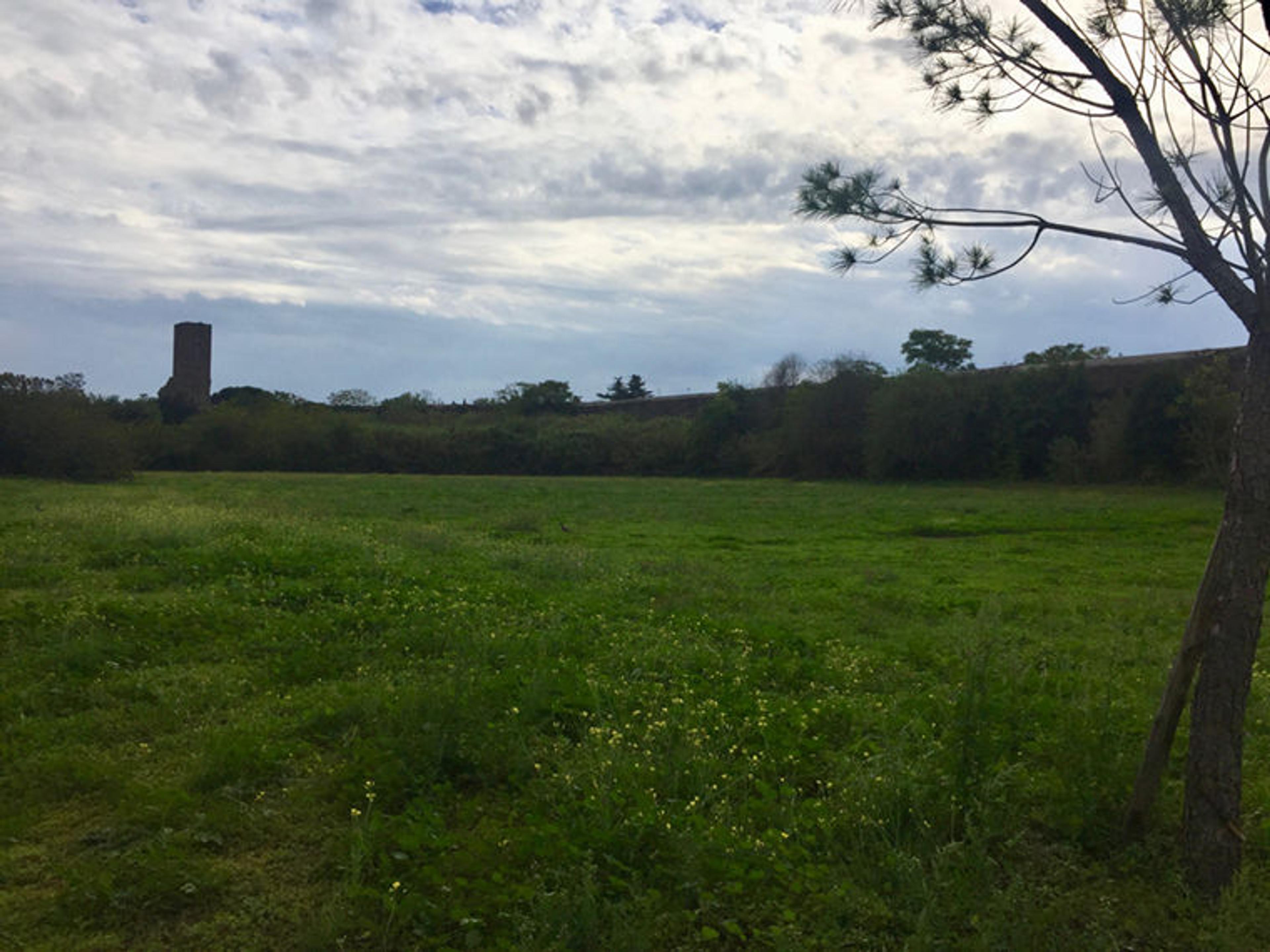
Section of the Claudian Aqueduct with the Tor Fiscale, Rome, Italy, 2016. Photo by Shannon Vittoria
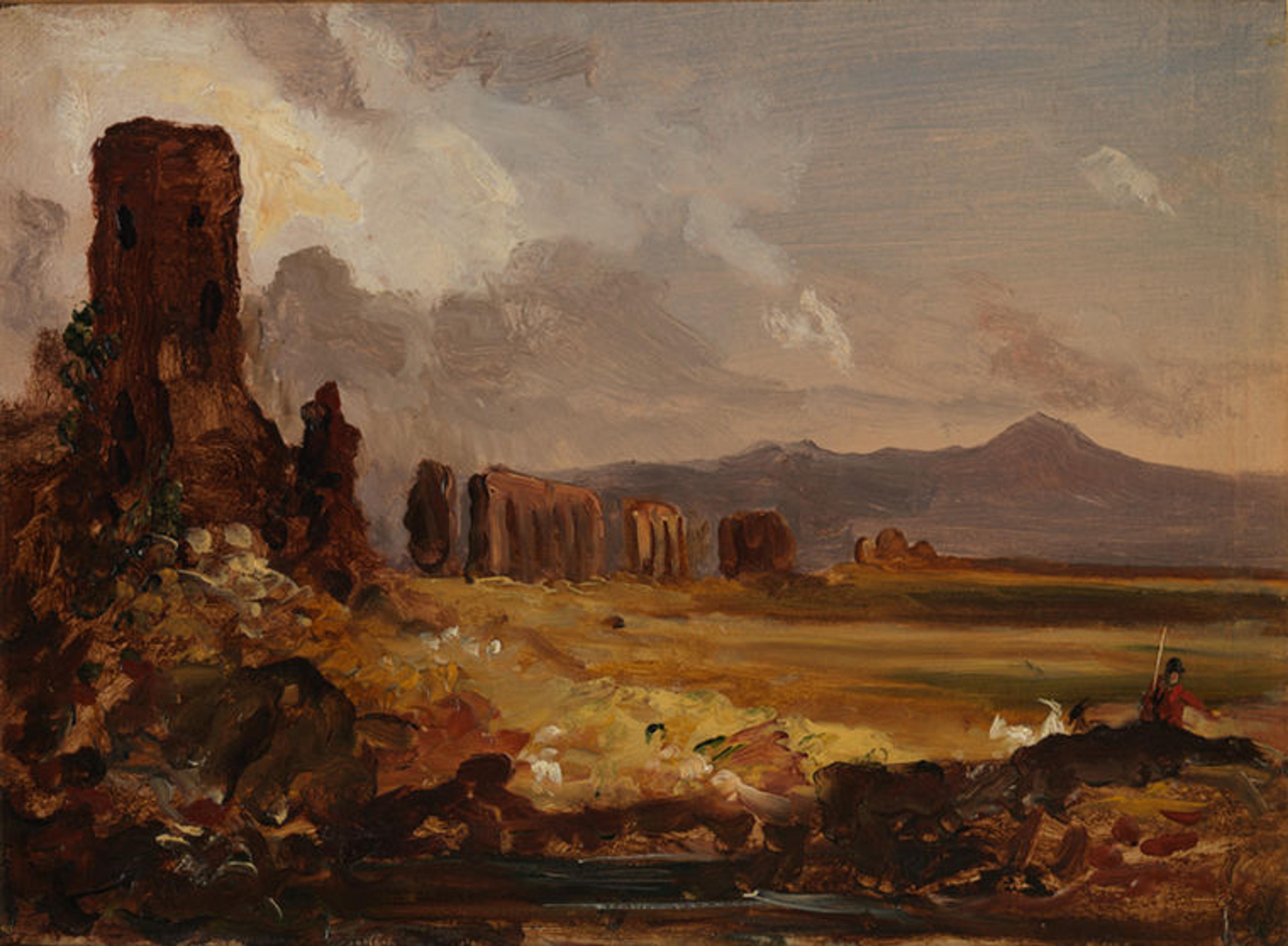
Thomas Cole (American, 1801–1848). Campagna di Roma (Study for Aqueduct near Rome), 1832. Oil on paper mounted on canvas, 8 1/2 x 11 1/2 in. (21.6 x 29.2 cm). Private collection, New York
From Rome, we traveled to both Tivoli and Naples—cities that inspired several of Cole's later landscapes, including The Titan's Goblet in The Met collection. These trips confirmed the importance of the artist's time in Italy, and our research shed new light on the lasting influence of his Grand Tour, most notably on his conception and execution of The Course of Empire.
Like Cole in 1832, we eventually had to return to New York City, but our time abroad shaped our understanding of his working methods and the paintings he completed after returning to the United States. In the wake of our journey, we focused much of our attention on re-examining The Oxbow and The Course of Empire series, using our insights about his time in England and Italy to inform new interpretations of these well-known pictures.

Thomas Cole's The Oxbow in the Department of Paintings Conservation at The Met, 2016. Photo by Shannon Vittoria
Left: Betsy Kornhauser and Tim Barringer studying Thomas Cole's Course of Empire series at the New-York Historical Society, 2016. Photo by Shannon Vittoria

Future blog posts throughout the run of the exhibition, which is on view through May 13, will explore these new interpretations in greater detail. For now, we encourage you to visit the show and embark on Thomas Cole's Journey, following him as we did from northern England to New York City; from the picture galleries of London to the Roman Campagna; and from the Hudson River Valley to the galleries of the American Wing, where we hope you are inspired to see Thomas Cole in a new light.
Related Content
Thomas Cole's Journey: Atlantic Crossings is on view at The Met Fifth Avenue from January 30 through May 13, 2018.
Read a blog series about Thomas Cole on Now at The Met.
See more digital content related to Thomas Cole, including a walkthrough of the exhibition.
Elizabeth Kornhauser
Elizabeth Mankin Kornhauser is the Alice Pratt Brown Curator of American Paintings and Sculpture in The American Wing.
Shannon Vittoria
Shannon Vittoria is a research associate in The American Wing at The Metropolitan Museum of Art.